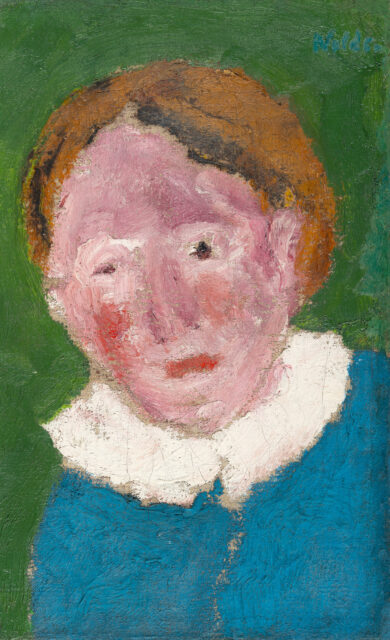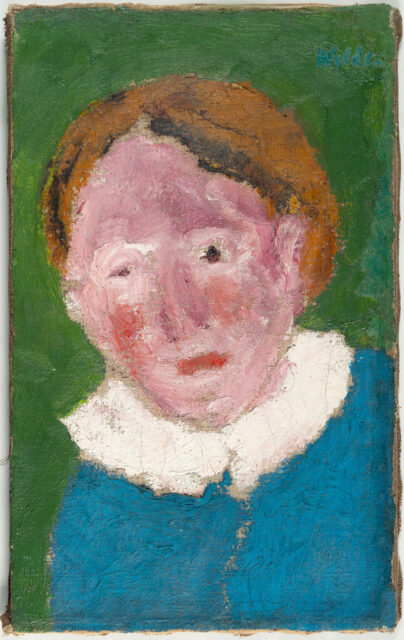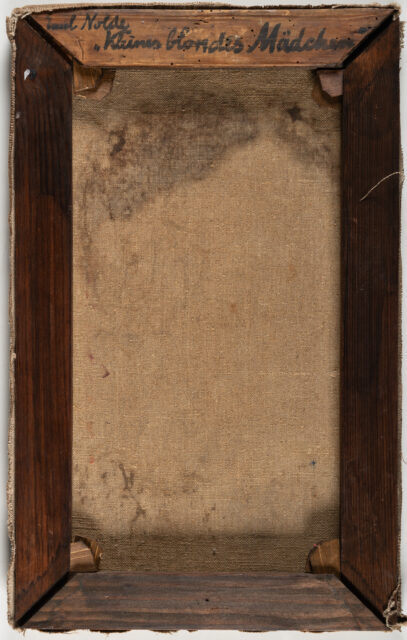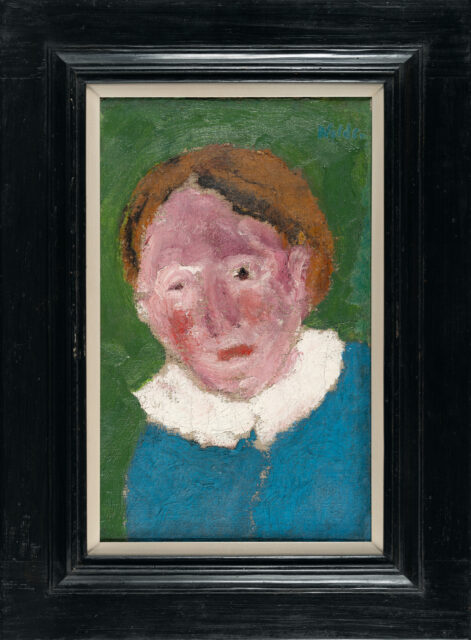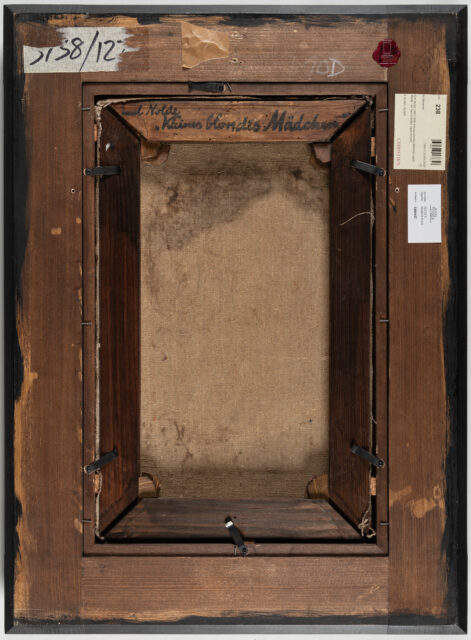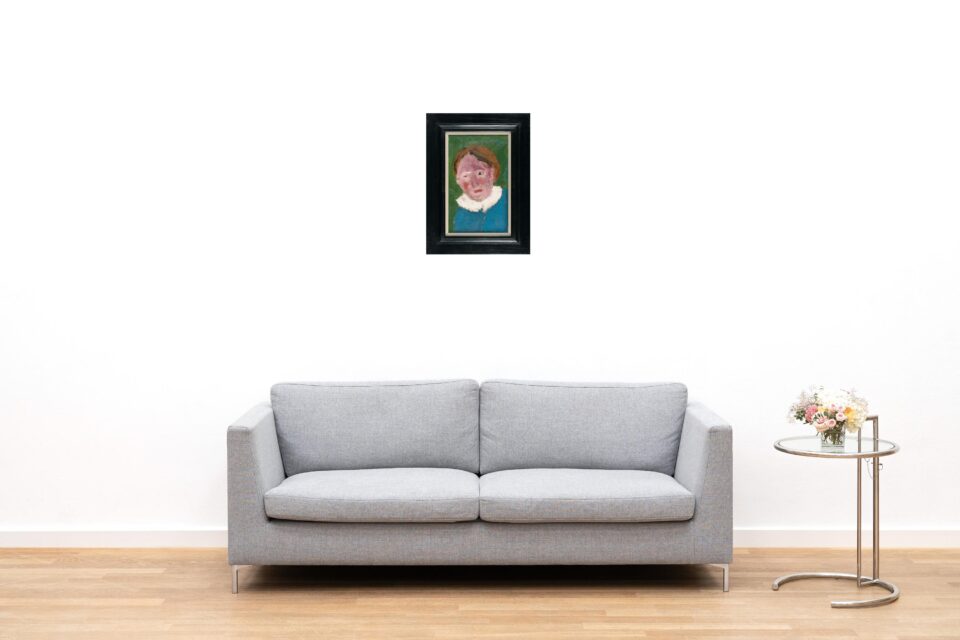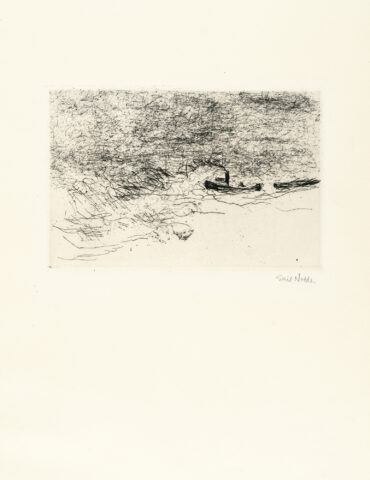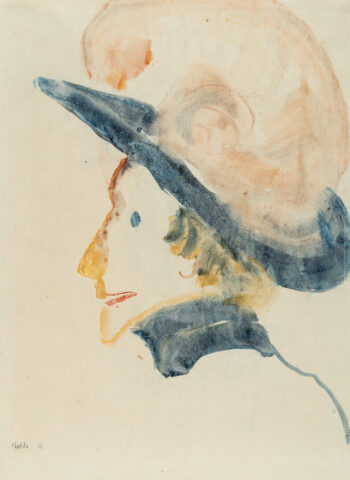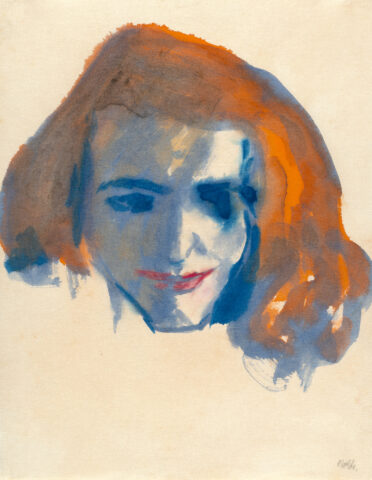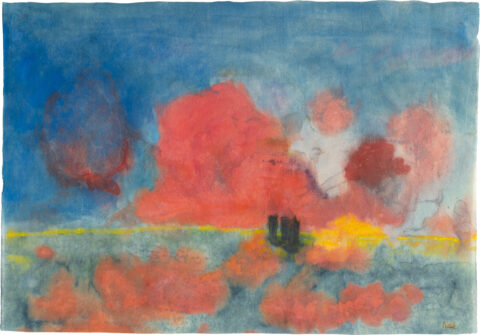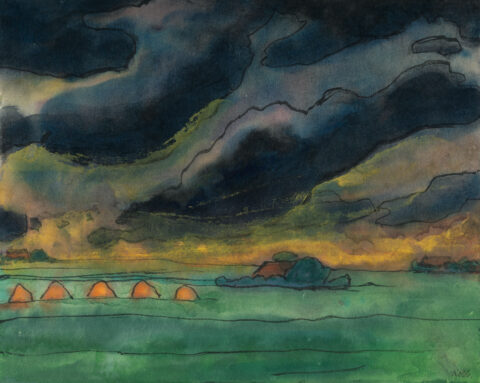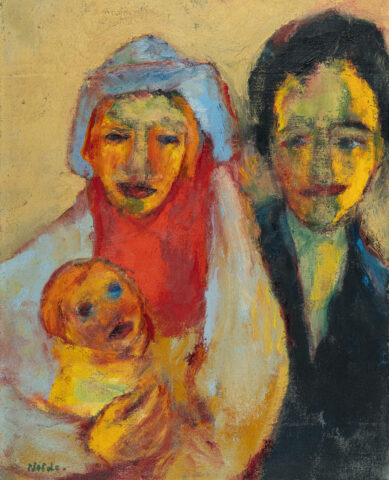
“Kleines blondes Mädchen” (Little blonde girl)
Details
The work is listed in the artist’s list of works from 1930 as “1918 Kleines blondes Mädchen”.
Exhibition:
German Expressionists, Kunstverein, Bautzen 1920, cat. no. 107;
Emil Nolde meets Paula Modersohn-Becker, Museen Böttcherstraße, Bremen 2016/17, p. 102, cat. no. 37, with col. illus.
Provenance:
Erich Goeritz, Chemnitz, acquired before 1930;
Private collection, Berlin, acquired from the aforementioned in 1983;
Sotheby’s, London 8 February 2006, lot 420;
Private collection, Hamburg.
Descrizione
– Charming work from the Berlin era
– Nolde captures the essence of the sitter in a simplified brushwork
– Testimony to Nolde’s love of children and his image of humanity
She is of simple beauty: the little blonde girl sits calmly in front of a green wall as a model for the painter Emil Nolde. Wearing a light blue top with a white collar that you can almost feel scratching your own neck, her reddish-blonde hair is tied back in a plait. The sitter’s face suggests that she is an adolescent. Where the collar and rosy cheeks still suggest carefree childhood, the gaze already shows youthful seriousness. Nolde captures the sitter’s essence, but not her naturalistic shell, in a coarse and simplified style. He shows the face with a dense application of colour, simplifying it and yet allowing details such as the cheeks to stand out. This simplification can be recognised as a programmatic stylistic decision, as he also uses this style in other of his depictions of “simple” people. Instead of creating a painting here that offers us a recognisable impression of the appearance of a particular girl, Emil Nolde is rather portraying the feeling of an intermediate state that all viewers will know too well from their own youth: On the one hand no longer quite a child, on the other not yet a teenager.
In his portrait of the stranger, Emil Nolde simultaneously shows his image of humanity and testifies to his love of children. He and his wife Ada will never have children, but he is enthusiastic about their nature. Although his wish to have children is not to be fulfilled, it is the children of relatives and friends whom he paints and lavishes with attention. He sees a primal nature shining through in children, which he otherwise also attributes to “primitive peoples”. While his attitude towards other peoples and “races” in the 1930s is to be understood critically, his idea of children is characterised by understanding. They are not small adults, but live in a world of their own that sometimes seems wondrous to older people. They express a carefreeness and naturalness that we all lose as we get older.
The girl presented here seems to be on the verge of reaching this threshold. Her eyes and slightly lowered head already reveal that she is beginning to perceive the world around her. Her clothes and not least the title, however, allow her to remain in childlike simplicity for a brief moment – perhaps only in the painter’s wish. Linger, you are so beautiful …
* Tutte le informazioni includono la commissione a carico dell'acquirente (27%) senza IVA e senza garanzia. Salvo errori.
** Tutte le informazioni più la commissione a carico dell'acquirente e l'IVA e senza garanzia. Salvo errori.
*** Con riserva: L'offerta è stata accettata al di sotto del limite. L'acquisizione dell'opera potrebbe essere ancora possibile nella nostra vendita post-asta.
R = Le opere d'arte regolarmente tassate
N = Opere d'arte soggette a tassazione differenziata e provenienti da un paese non UE
Non è consentita la riproduzione e la distribuzione privata o commerciale di tutte le illustrazioni delle opere esposte nell'archivio della mostra e dell'asta. Tutti i diritti riservati.


